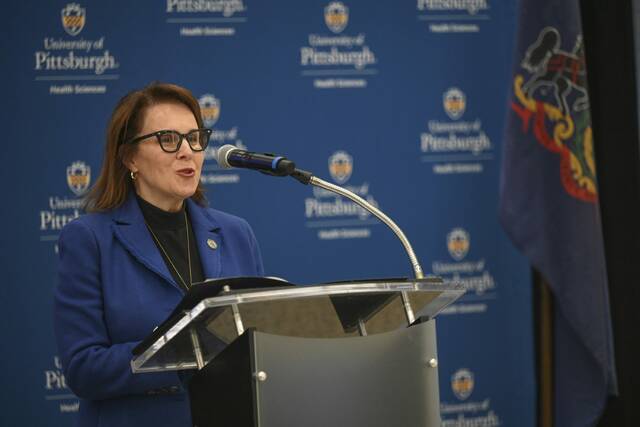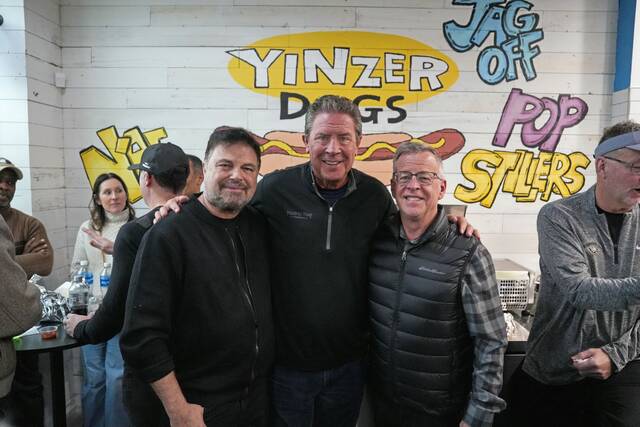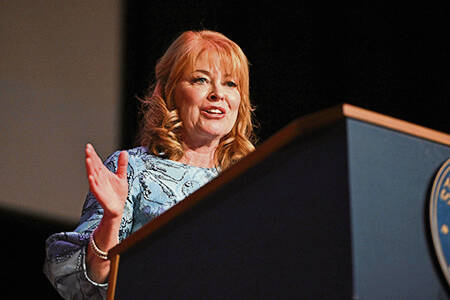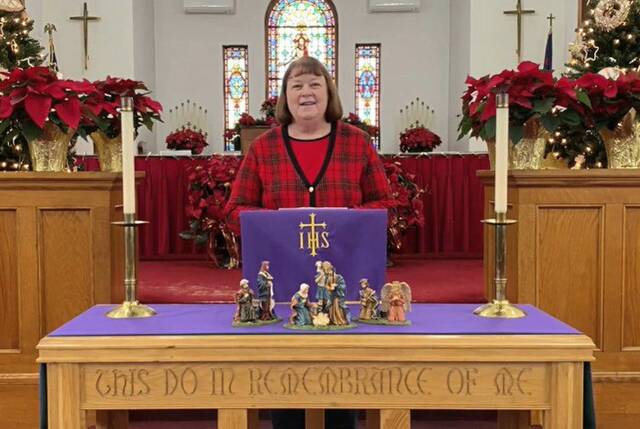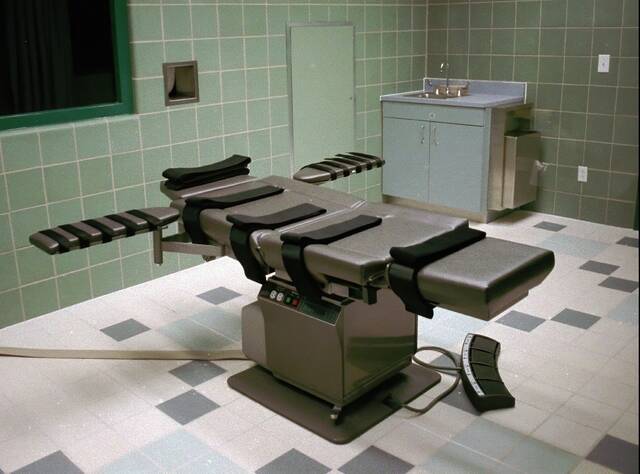In recent years, it seems Western Pennsylvania has seen more than its fair share of mass shootings.
But, depending on the definition used, some of those incidents don’t qualify as a mass shooting.
Many groups — including the Associated Press/USA Today/Northeastern University Mass Killing Database — characterize a mass shooting as one in which at least four people are killed, excluding the attacker.
Others like the Washington, D.C.-based nonprofit Gun Violence Archive define a mass shooting as an incident in which at least four people are wounded — regardless of the death toll.
Following the more restrictive definition, LA Fitness, Western Psych and the Easter Airbnb attack on Pittsburgh’s North Side weren’t mass shootings.
That notion is ridiculous, said James Densley, one of the founders of The Violence Project, a research center funded by the National Institute of Justice that is dedicated to reducing violence in society.
“We have to recognize every form of gun violence is a tragedy and is worthy of our response,” said Densley, who teaches criminology at Metropolitan State University in Minnesota. “If the term ‘mass shooting’ gets people to pay attention and do something about this, then maybe it works.
“That’s the sad reality of this situation.”
The definition
There is no question, experts say, that there are increasing numbers of guns being sold and more people being killed by firearms.
But whether the number of mass shootings is increasing depends on whom you ask.
James Alan Fox, a nationally known criminologist at Northeastern University who has been studying mass shootings for decades, is a principal in the Associated Press/USA Today/Northeastern University Mass Killing Database.
Using its definition, Fox said, there is no long-term trend, and the numbers have stayed steady. Over the past five years, he said, the number of mass shootings cited in his database is between 22 and 31.
But according to Gun Violence Archive, which boasts of providing near-real time data about gun violence culled from law enforcement sources nationwide, those numbers are much higher. The group reports that mass shootings have more than doubled over the past four years — to 693 in 2021 from 336 in 2018.
Officials from Gun Violence Archive did not respond to a request for comment.
Fox said although he believes Gun Violence Archive is a valuable resource, the way it counts mass shootings is flawed.
Using numbers from Gun Violence Archive, he said, it appears the problem of mass shootings in the United States is much worse than it is. But even with the archive’s data, it shows that only one person is killed on average in each mass shooting.
“I don’t want to minimize the suffering gunshot victims have, but it’s not death,” Fox said. “Death is definitive; there’s no gradations.”
Criminal justice professor Jaclyn Schildkraut, whose definition is much broader than Fox’s, disagrees. She defines mass shootings as an incident of targeted violence that includes multiple victims, whether injured or killed, and both the victims and locations are chosen at random or for their symbolic value.
“You are more likely to be injured in a mass shooting than you are to be killed,” said Schildkraut, who teaches at State University of New York at Oswego and has published extensively on mass shootings.
Using a more strict definition, Schildkraut said, “you’re not capturing the less lethal but still horrific mass shooting events.”
She cited as an example the 1998 shooting at Thurston High School in Springfield, Ore. Two people were killed, and 25 others were shot and wounded.
“How can you tell a community that had 27 people shot this isn’t a mass shooting?” Schildkraut asked.
Additionally, she said, there are reasons more people survive these types of events now than in the past — advances in medical treatment, emergency medical response and police response.
“To say that because you didn’t die, you’re qualitatively different for some arbitrary data collection … it could be somebody was just lucky,” Schildkraut said.
Although the FBI does not define the term mass shooting, the agency defines mass murder as an incident involving four or more people being killing within one event.
The debate is one of semantics, and centered among academics, but Densley said he thinks it should matter to the public, too.
“The problem with (stricter) definitions is they discount the huge emotional trauma associated with any shooting, period,” he said. “It seems like we’re trying to discount the experience of some victims, and we’re creating some hierarchy of shootings.
“The way in which we classify these shootings creates exactly this perception that some shootings matter more than others.”
Using a broader definition, Densley continued, “is a recognition that every shooting and every victim and every family member and every life lost are changed by an event.
“I think that has been missed historically,” he said.
Densley said circumstances matter: A drug deal gone bad is different from a workplace shooting is different from a shooting at a party.
“In turn, they need different preventions and strategies,” he said. “You wouldn’t prevent a gang shooting in the same way you’d prevent a workplace shooting. But the tragedy is real and is equal and demands attention.”
Perception
In a survey Fox conducted, he said he found that 25% of people believe mass shooters kill more people than all other types of gun violence combined.
But that is far from the truth, Schildkraut said.
In 2017, there were 14,542 firearm homicides nationwide. According to Gun Violence Archive, which uses the broader definition of mass shooting, there were 441 fatalities that year during mass shootings.
That means only 3% of all firearm homicides occurred during a mass shooting, Schildkraut said.
Fox took it a step further.
The average number of children killed by gunfire at school each year in the United States is 6.7, he said. That’s out of 55 million school children, Fox said.
For perspective, five times that many are killed traveling to or from school each year, he said.
Relative to active shooters in American schools, Fox said that, on average, there are two such situations in the U.S. each year. That’s out of 120,000 schools, he said.
“They’re scary when they happen, but the risk is low,” he said.
Mass shootings in public places also are rare, Fox said.
“They’re not as deadly as people perceive them to be,” he said. “Las Vegas, Pulse, Parkland, those are rare.
“Mass shootings are not an epidemic, no matter what definition you use.”
About half of all mass shootings involve family massacres. Often, they occur at parties where there is alcohol involved and people are carrying guns, Fox said.
“The American public imagines the synagogue in Pittsburgh — that’s what they think of when they hear mass shootings,” Fox said.
But, he continued, it’s rarely indiscriminate shooting like in Las Vegas in 2017 where 60 people were killed and 411 were wounded at a music festival.
“They tend to be targeted,” Fox said, “and, unfortunately, innocent bystanders get caught in the crossfire.”
How do you make people care?
As a society, Americans are desensitized to mass shootings, Schildkraut said.
It is a combination of an overabundance of media coverage, she said, combined with a desire by people to believe it could not happen in their community.
“I don’t know how you make people care until it impacts them,” said Schildkraut, who grew up in the community where the Parkland, Fla., school shooting happened in 2018. “It’s human nature.”
In the United States, the response is always reactive, she said.
“We do the same dance every time one happens,” she said, “and then we don’t do anything.”
Richard Garland, director of the Health Equity’s Violence Prevention Project through the University of Pittsburgh, visited with students from Penn Hills and Westinghouse high schools last week in the wake of the Airbnb shooting.
According to Pittsburgh police, nearly 100 shots were fired inside and out of a house being rented as an Airbnb on Madison Avenue at Suismon Street on the North Side shortly after midnight on Easter Sunday.
The home was the site of a large party.
Two people, Mathew Steffy-Ross, 17, of Pitcairn, and Jaiden Brown, 17, of North Braddock, were killed. Nine other people were wounded.
Police and witnesses have said there were as many as 200 people inside when the gunfire began.
“The girls have been more open about what they saw and what happened when they were there,” Garland said. “The guys are like, ‘I’m never going to anything like that again.’ They’re saying they should have just turned around and left.”
Students who were there, Garland said, saw people standing next to them get shot, while others were lying on the ground and getting trampled.
“It’s going to take a little while before they’re able to deal with it,” he said.
He has referred families to local mental health centers, including re:Solve, Western Psychiatric Institute & Clinic and the Center for Victims.
“The mental health stuff, we’re going to be dealing with that for a minute,” Garland said.
Giffords Law Center to Prevent Gun Violence is one entity that is trying to address the underlying causes of firearm deaths.
Founded by former Congresswoman Gabrielle Giffords, who was shot in the head at a 2011 public event in which six people were killed and 12 injured, the center’s goal is to end gun violence in the United States through education and supporting elected officials and candidates who support gun laws.
“There’s a whole range of things we could be doing different, and when we aren’t, we are all complicit,” managing director Laura Cutilletta said. “Most gun owners are reasonable people who agree with the policies we support.”
Giffords is trying to make the issue one that is less political.
“We are trying to pull it back from that polarized place and appeal to common sense,” Cutilletta said.
A spokesperson for the NRA declined to comment for this story. Representatives from Gun Owners of America were unavailable to comment Friday.
There’s no question that gun violence is surging, Cutilletta said.
According to the Pew Research Center, 19,384 homicides were committed with firearms in 2020, a 34% increase from a year earlier. That’s the highest increase on record, Cutilletta said.
Across the country, there has been an increase in gun sales. According to Small Arms Analytics, which uses FBI background check data to formulate estimates, gun sales in 2020 were the highest ever with nearly 23 million sold. Last year saw the second-highest sales at about 20 million. Those figures are up from 16.7 million sold in 2016.
And according to Everytown for Gun Safety, which calls itself the largest gun violence prevention organization in America, 25 states currently do not require a permit or training to carry a concealed firearm.
“Guns are a problem. It’s just that mass shootings are a very small part of it,” Fox said. “It’s a tiny tip of the iceberg.”
What society ought to focus on, he said, are the 33 people killed on average every day in the United States by firearms.
“It’s the daily carnage that we need to do something about,” Fox said. “Mass shootings get more people inspired and want to implement restrictions, but we are least likely to be impacted by (mass shootings).”
Instead of debating the definition, Densley said, we should be asking, “Oh my God, why are so many people getting shot?”



